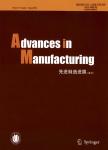Modeling of laser adjustment for large diameter tubes using robotic kinematic theories
作者机构:School of Mechanical Engineering Shanghai Jiao Tong University Shanghai 200240 People's Republic of China School of Mechanical Engineering Jiangsu University Zhenjiang 212013 Jiangsu Province People's Republic of China
出 版 物:《Advances in Manufacturing》 (先进制造进展(英文版))
年 卷 期:2018年第6卷第4期
页 面:401-408页
核心收录:
学科分类:07[理学] 0817[工学-化学工程与技术] 0807[工学-动力工程及工程热物理] 0805[工学-材料科学与工程(可授工学、理学学位)] 0802[工学-机械工程] 0811[工学-控制科学与工程] 0801[工学-力学(可授工学、理学学位)]
基 金:National Natural Science Foundation of China (Grant Nos. 51121063, 51575354, 51105255, 51205251) National Key Technology Research and Development of the Ministry of Science and Technology of China (Grant No. 2014CB046604) Shanghai Municipal Science and Technology Project (Grant Nos. 15111102203, 15111107902).
主 题:Laser adjustment Large diameter tube Robotic kinematics theories Production of exponential formula
摘 要:Laser adjustment is a new technique that employs laser forming processes to align components along specific directions. To develop a laser adjustment solution with a minimal number of bends, herein, a new modeling and calculation method that uses robotic kinematic theories is introduced. A numerical example and the corresponding laser adjustment solution are presented. The simulation results suggest that a straight tube with a flange connector can be adjusted to match the corresponding connector with three bends. Finally, the simulation results were verified using experiments. The maximum deviation was approximately 0.4 mm and the deviation of the flange connector was smaller, showing that a good adjustment quality could be achieved using the specific adjustment solution.



